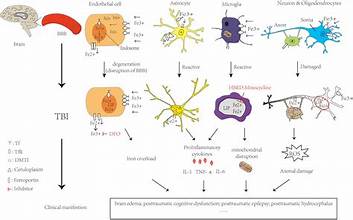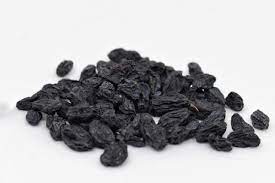Keywords: Iron, immunity, energy, diet, nutrition, RDA
Introduction:
Iron, an essential mineral found in every cell of the body, plays a vital role in maintaining optimal health. Often associated with the transport of oxygen in the blood, iron’s influence extends far beyond this critical function. It is involved in numerous biological processes, from immune system strength to energy production.
Iron and Immunity:
Iron is a crucial component of the immune system, enabling the body to fight off infections and illnesses. It is essential for the production of immune cells, such as lymphocytes and macrophages, which are the body’s defense against pathogens. Iron deficiency can impair immune function, making individuals more susceptible to infections and prolonging the duration of illnesses.
Iron and Energy Production:
Iron is a fundamental element of hemoglobin, the protein in red blood cells that carries oxygen from the lungs to all parts of the body. Oxygen is the essential fuel for cellular respiration, the process that generates energy in our cells. Without adequate iron, oxygen delivery is compromised, leading to fatigue, weakness, and reduced exercise tolerance.
Other Health Benefits of Iron:
Beyond its impact on immunity and energy production, iron offers a range of health benefits, including:
- Brain Function: Iron is essential for cognitive development and function, particularly in children. Iron deficiency can affect memory, attention, and overall learning ability.
- DNA Synthesis: Iron is involved in the synthesis of DNA, the genetic material that carries our genetic information. Iron deficiency can disrupt DNA replication, potentially leading to genetic abnormalities.
- Wound Healing: Iron promotes tissue growth and repair, facilitating wound healing.
Prevalence of Iron Deficiency in Community
The prevalence of iron deficiency anemia (IDA) varies widely around the world, with the highest rates found in developing countries. According to the World Health Organization (WHO), IDA is the most common and widespread nutritional deficiency, affecting an estimated 2 billion people globally. In developing countries, the prevalence of IDA among preschool children can range from 20% to 50%, while in developed countries, the prevalence is typically much lower.
Several factors contribute to the high prevalence of IDA in developing countries, including:
- Poor diet: Diets in developing countries are often low in iron-rich foods, such as meat, poultry, and fish. They may also be high in phytates, which are compounds found in plant foods that can bind to iron and reduce its absorption.
- Infectious diseases: Infectious diseases, such as malaria and hookworm, can cause chronic blood loss, leading to iron deficiency.
- Poor sanitation: Poor sanitation can contribute to the spread of intestinal parasites, which can also cause blood loss and contribute to iron deficiency.
- Increased iron requirements: Pregnant women and children are at increased risk of iron deficiency due to their higher iron requirements.
IDA can have a significant impact on health and well-being. It can lead to fatigue, weakness, decreased work productivity, and impaired cognitive function. In children, IDA can retard growth and development. In severe cases, IDA can also lead to heart failure and even death.
Several strategies can be implemented to reduce the prevalence of IDA, including:
- Fortification of food: Fortifying staple foods with iron, such as rice, flour, and salt, can be an effective way to increase iron intake in a population.
- Supplementation: Providing iron supplements to high-risk groups, such as pregnant women and children, can also help to prevent IDA.
- Diet education: Educating people about the importance of iron-rich foods and how to increase their intake can also be effective in reducing IDA rates.
- Improved sanitation: Improving sanitation and hygiene can help to reduce the spread of intestinal parasites that can contribute to iron deficiency.
By implementing these strategies, countries can make significant progress in reducing the prevalence of IDA and improving the health and well-being of their populations.
Symptoms of Iron deficiency:
The symptoms of a deficiency can vary depending on the specific nutrient that is lacking. However, some general symptoms of nutrient deficiency can include:
- Fatigue: This is a common symptom of many nutrient deficiencies, as the body does not have the energy it needs to function properly.
- Weakness: This can be a symptom of muscle weakness, which can be caused by a deficiency in protein, iron, or potassium.
- Pale skin: This can be a symptom of iron deficiency anemia, which is a condition in which the body does not have enough iron to make red blood cells.
- Brittle hair and nails: This can be a symptom of a deficiency in biotin, zinc, or iron.
- Dry skin: This can be a symptom of a deficiency in vitamin A, essential fatty acids, or zinc.
- Slow-healing wounds: This can be a symptom of a deficiency in zinc, vitamin C, or protein.
- Digestive problems: These can be a symptom of a deficiency in fiber, probiotics, or magnesium.
- Mood swings: These can be a symptom of a deficiency in vitamin B12, tryptophan, or magnesium.
- Impaired cognitive function: This can be a symptom of a deficiency in iodine, iron, or B vitamins.
- Weakened immune system: This can be a symptom of a deficiency in vitamin C, zinc, or iron.
If you are experiencing any of these symptoms, it is important to see a doctor to get a diagnosis and treatment plan.
Measures to prevent Iron Deficiency:
Preventing iron deficiency anemia (IDA) is crucial for maintaining overall health and well-being. Here are some preventive measures that can help:
Dietary Strategies:
- Consume iron-rich foods: Incorporate iron-rich foods into your diet, such as red meat, poultry, fish, beans, lentils, tofu, fortified cereals, dark leafy green vegetables, and nuts and seeds.
- Pair iron-rich foods with vitamin C: Vitamin C enhances iron absorption. Consume iron-rich foods alongside vitamin C-rich foods like citrus fruits, bell peppers, broccoli, and strawberries.
- Limit phytate-rich foods: Phytates can inhibit iron absorption. Reduce intake of phytate-rich foods like unprocessed grains, legumes, and nuts.
- Avoid iron-blocking substances: Certain substances can hinder iron absorption. Limit consumption of coffee, tea, and calcium supplements during meals.
- Cook in iron cookware: Cooking in iron cookware can add a small amount of iron to your food.
Lifestyle Modifications:
- Regular exercise: Regular physical activity improves iron absorption and utilization. Aim for at least 30 minutes of moderate-intensity exercise most days of the week.
- Adequate sleep: Sleep deprivation can impair iron absorption. Aim for 7-8 hours of quality sleep each night.
- Manage underlying conditions: Certain medical conditions, such as heavy menstrual bleeding or inflammatory bowel disease, can increase iron loss. Manage these conditions effectively to reduce iron deficiency risk.
- Seek medical guidance: Consult your doctor if you have concerns about your iron levels or are at increased risk of IDA. They can assess your iron status and recommend appropriate preventive measures or treatment options.
- Consider iron supplements: If dietary intake is insufficient, iron supplements may be recommended under the guidance of a healthcare professional.
Remember, prevention is key. By adopting these preventive measures, you can maintain adequate iron levels, promote overall health, and reduce your risk of developing iron deficiency anemia.
Dietary Sources of Iron:
Iron is found in a variety of foods, with animal sources generally providing higher levels of iron than plant sources. Heme iron, the form of iron found in animal products, is more readily absorbed by the body than non-heme iron, which is found in plant-based foods.
Rich sources of heme iron include:
- Red meat: Beef, lamb, and pork
- Poultry: Chicken and turkey
- Fish and seafood: Oysters, shrimp, and sardines
Rich sources of non-heme iron include:
- Legumes: Lentils, beans, and peas
- Fortified cereals: Many breakfast cereals are fortified with iron
- Nuts and seeds: Pumpkin seeds, cashews, and almonds
- Dark leafy green vegetables: Spinach, kale, and collard greens
Recommended Daily Allowance (RDA) of Iron:
The RDA for iron varies depending on age and sex. For adults, the RDA is 18 mg for women and 8 mg for men. Pregnant women require an additional 2 mg per day, while lactating women need an extra 4 mg per day.
Iron Deficiency and Anemia:
Iron deficiency is one of the most common nutritional deficiencies worldwide, affecting an estimated 2 billion people. Iron deficiency can lead to anemia, a condition characterized by a reduced number of red blood cells or a low level of hemoglobin. Symptoms of anemia include fatigue, weakness, shortness of breath, pale skin, and dizziness.
Preventing Iron Deficiency and Promoting Overall Health:
To ensure adequate iron intake and promote overall health, consider incorporating iron-rich foods into your diet. If dietary intake is insufficient, iron supplements may be recommended under the guidance of a healthcare professional. Additionally, vitamin C can enhance iron absorption from plant-based foods.
Conclusion:
Iron, an essential mineral, plays a vital role in maintaining immunity, energy production, and overall well-being. By consuming iron-rich foods and maintaining a healthy lifestyle, you can ensure adequate iron intake and reap the numerous health benefits this essential mineral has to offer.



